You’d be forgiven for thinking that retouching photos are a relatively modern thing. With beauty standards at an all-time high and social media promoting it, it’s no surprise that plastic surgery is in high demand, and retouching our photos has become the norm.
But, you may be surprised to discover that photographers have been retouching their photos for centuries. An instructional book published in 1868 shows examples of photo retouching dating all the way back to the nineteenth century.
“Complete Self-instructing Library of Practical Photography” is a 10-volume collection of black and white books. It gives instructions to photographers on how to shoot, retouch, and ‘eliminate imperfections’ on their subjects.
We have some of the most fascinating before-and-after photos from the collection to share with you below. It’s clear from these images that people have always wanted to achieve flawlessness.
The 1909 edition of the book says, “in delivering finished work to your customers, you do not hand them the photographic negatives, but the prints made from these negatives.” And that “the early days of photography prints were made directly from the negative without any alteration.”
This is because “the wet-plate rendered softer effects than are obtainable with the ready prepared dry-plate.” Therefore, “the imperfections were less visible, and at that time the general public was satisfied with an exact likeness of themselves.”
However, when the dry-plate began replacing the wet-plate, photographs became more accurate, and “the defects in the human face became more apparent on the negative, and there arose a demand for a greater softening of the lines and a removal of the more objectionable imperfections.” That’s when retouching became a thing!
This image mentions the use of “first stage, preliminary etching.”
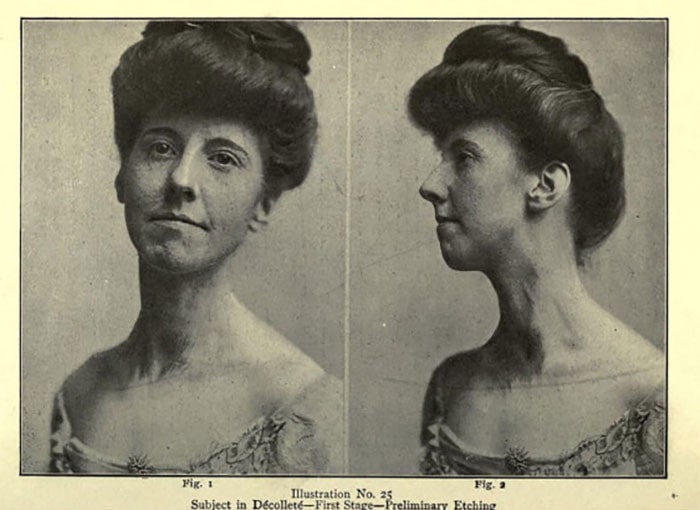
The finished result appears much smoother. The photographer used “second stage etching and retouching.”
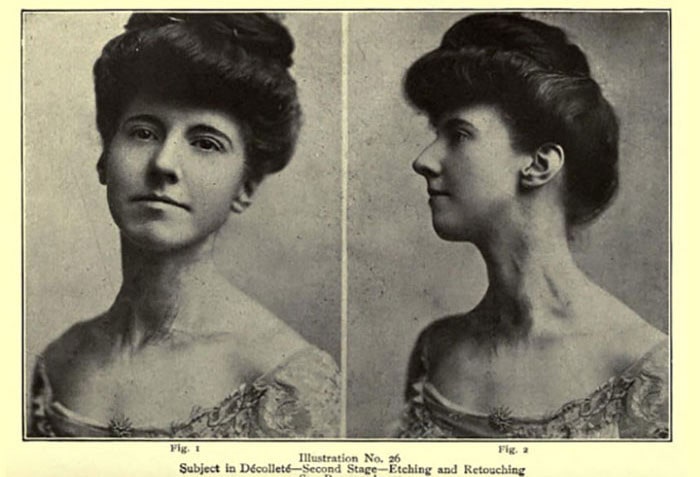
The image on the left shows the original negative, where the image on the right shows the reproduced negative after retouching.
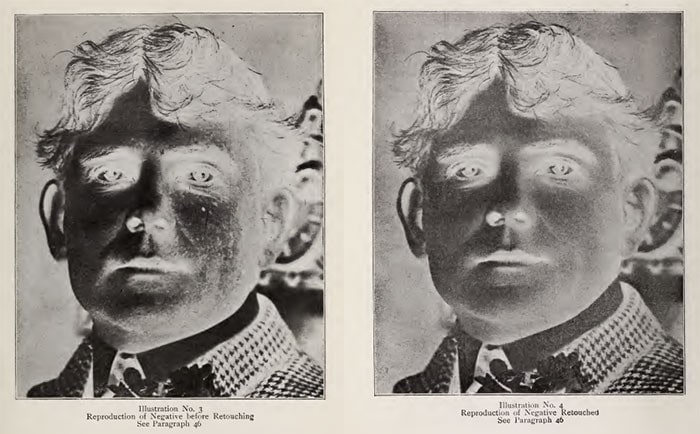
And below is the original negative print alongside the retouched negative print.
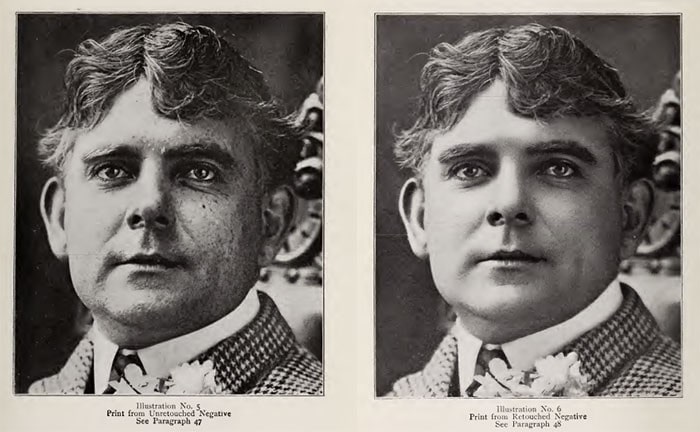
The photographers began removing imperfections from their subjects using brush and color from each print individually. But with so many images to retouch, photographers soon realized that the process was far too time-consuming.
So, it was time to develop a way to edit the negatives rather than the prints. “The results of these endeavors led to retouching the negative,” the book explains.
A photographer using a pencil and etcher to retouch an image.
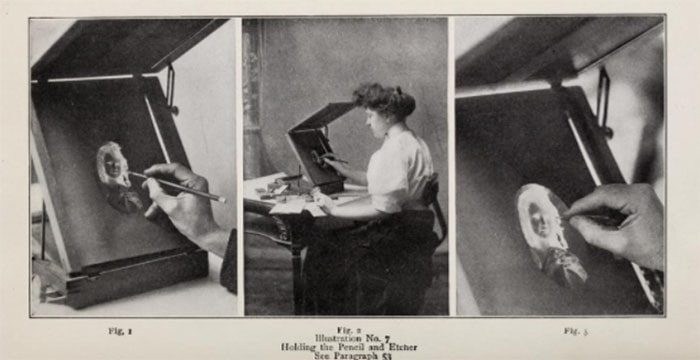
Some front view before-and-after examples of first stage retouching.
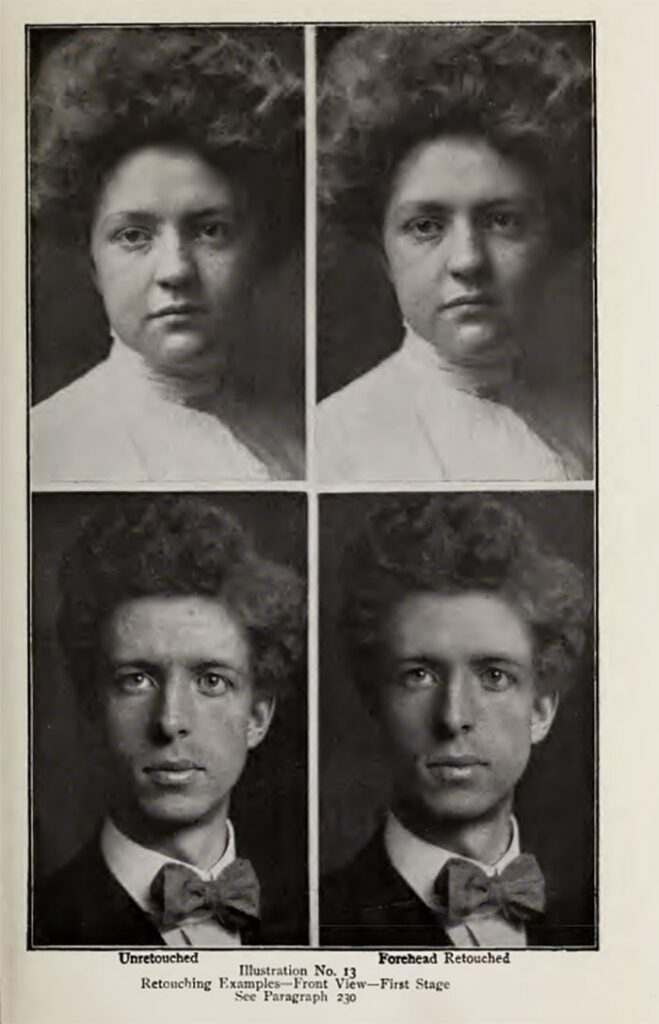
And the side view.
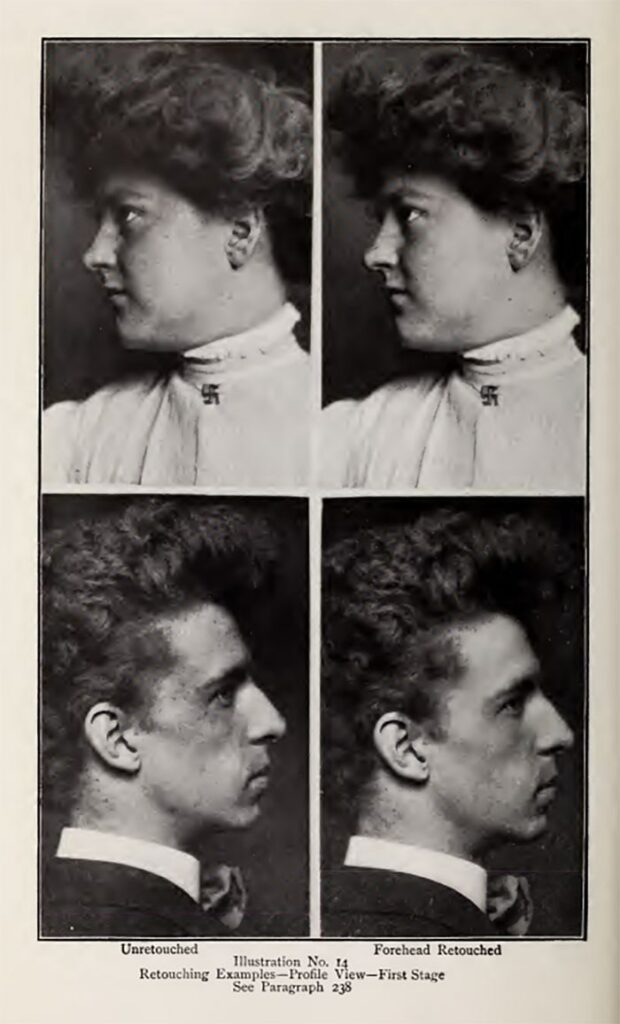
Back then, the retouching process was far more involved than the Facetune and Instagram filters we use today. Photographers would use tools such as a magnifying glass, etching knife, retouching fluid, spotting brush, negative varnish, and more to retouch and edit their images.
An image retouched using an etching knife.
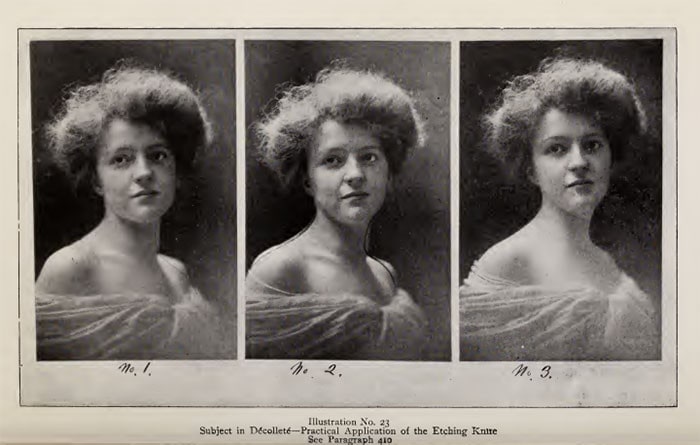
And an example of practical commercial etching.
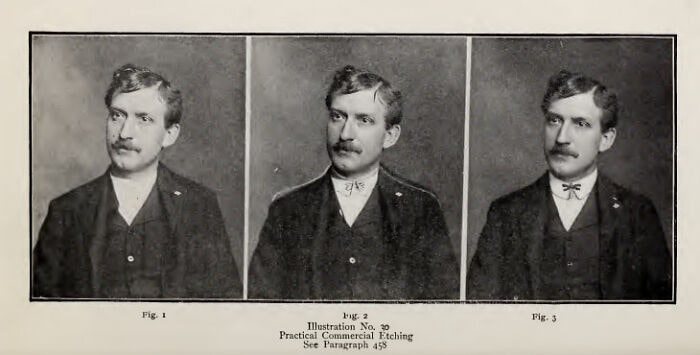
A child is removed from the photo.
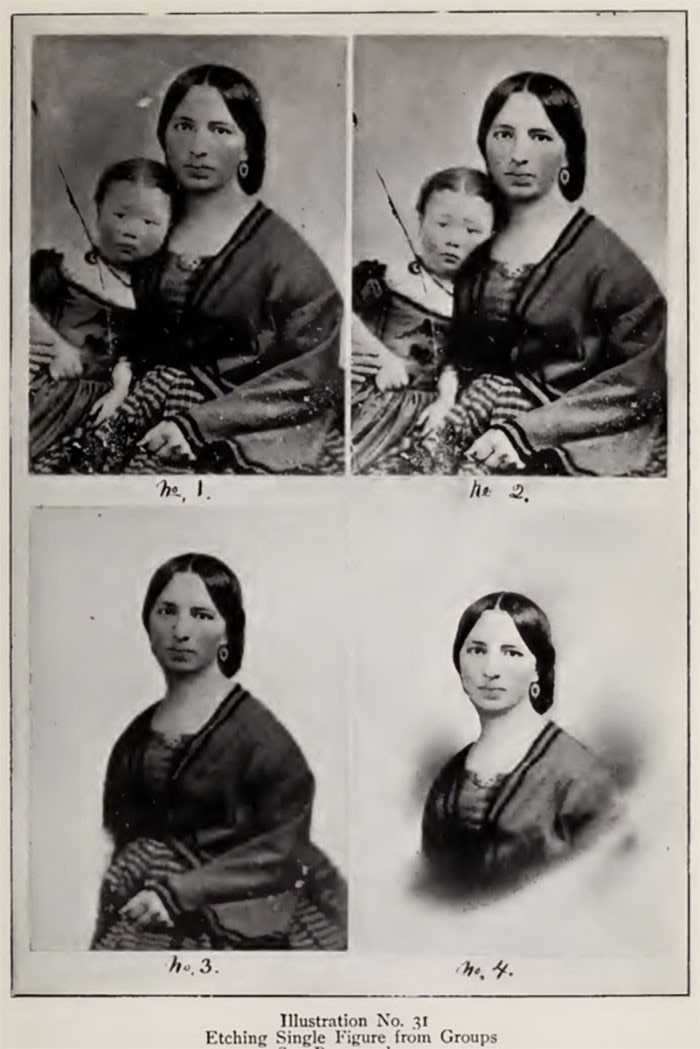
The book says that “by the combination of etching and retouching – i.e., by the use of the knife and pencil – you etch and model, and with these two instruments you can make any alteration you desire on the negative.” The most common alterations were straightening crooked noses, adding hair, making necks look thinner, and removing items or people from the background of the photos.
How fascinating are these images? What an insight into the beauty standards of history!




